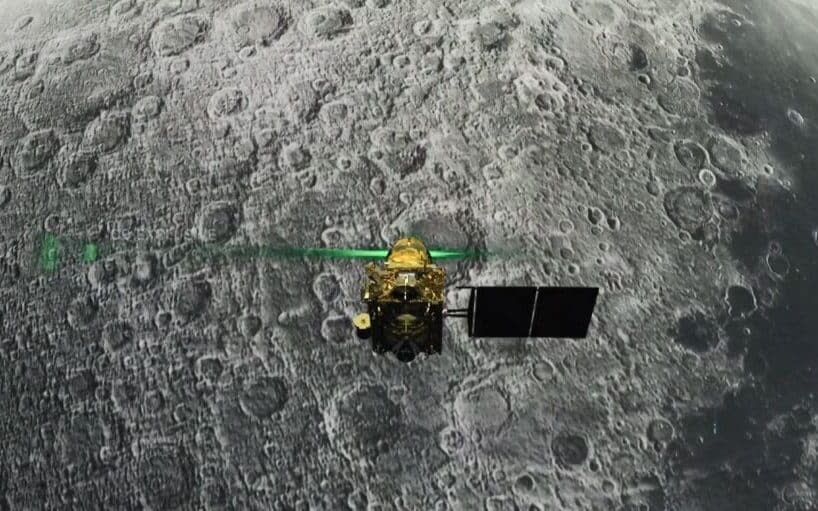Indian engineer 'interested in space' helps Nasa locate debris of Delhi's crashed Moon rover

Nasa has credited a 33-year old Indian engineer and computer programmer with helping it pinpoint the debris of India’s unmanned exploratory lunar spaceship that crashed on the moon in September.
The Vikram moon lander was scheduled to make a ‘soft landing’ on the moon’s South Pole on 7 September but the vehicle crash landed some 370 miles from its designated location due to a technical error.
Some weeks later Nasa announced the discovery of the lander and its "associated debris field" but was unable to precisely locate it.
The US space agency ascribed its success in detecting debris of the Vikram moon lander to Shanmuga Subramanian, a technical architect at Lennor India Technology Centre in Chennai, who took up the challenge in his spare time.
“Shanmuga Subramanian contacted the Lunar Reconnaissance Orbiter Camera (LROC) project with positive identification of debris” the agency said on Tuesday.

After getting the tip-off, the LROC team confirmed the identification of the lander, which had been launched aboard the Chandrayaan-2 spacecraft in July.
Nasa added that Mr Subramanian had helped Nasa confirm the location of the debris by analysing images of the lander before and after it crashed.
Mr Subramanian told the NDTV news channel that Nasa's inability to accurately determine this debris had sparked his interest.
He worked seven to eight hours every day for several weeks in his spare time to try and identify the debris of the Vikram lander.

The US space agency disseminated these images gathered by one of its spacecraft and invited the public to compare these with footage of the same area before and after the crash in order to determine the debris’ exact location.
Mr Subramanian said he took up the challenge and narrowed his search down to 1.2 square miles.
Assisted by Nasa’s images he scrutinised the impact area ‘pixel-by-pixel’ and after several weeks of relentless scrutiny alerted the US space agency and the Indian Space Research Organisation about his findings that eventually proved to be accurate.
The #Chandrayaan2 Vikram lander has been found by our @NASAMoon mission, the Lunar Reconnaissance Orbiter. See the first mosaic of the impact site https://t.co/GA3JspCNuhpic.twitter.com/jaW5a63sAf
— NASA (@NASA) December 2, 2019
"Is This Vikram Lander? (1 km from the landing spot) Lander might have been buried in lunar sand?" Mr Subramanian tweeted on October 3, tagging Nasa and ISRO.
On November 17, he once again tweeted additional details with two images of the crash site that have since been verified by Nasa.
Launched by ISRO aboard the Geosynchronous Satellite Launch Vehicle Mark III, the 5,244lb Chandrayaan-2 was as tall as a 14-storey building.
It consisted of the Vikram lander, a lunar orbiter, and the Pragyan lunar rover, and was scheduled to make its lunar touch down after a 48-day journey on 7 September to begin its investigative missions that included a search for water and the existence of other minerals.
The ‘orbiter’ had a mission life of one year built to take images of the lunar surface and ‘sniff’ the atmosphere, and the Vikram ‘lander’-which carried within its belly a six-wheeled ‘rover’ to analyse lunar soil.

